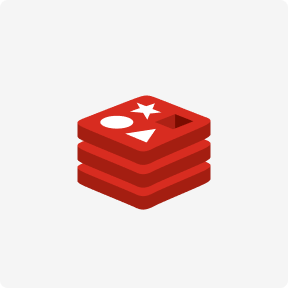Securing the pipeline serves as the backbone of the software development process. By ensuring the security of the pipeline, organizations maintain the trust of their users, safeguard sensitive information, and prevent security breaches. CI/CD security encompasses managing secrets and sensitive data, implementing access controls, and conducting security testing throughout the CI/CD pipeline. It aims to protect against potential attacks that could compromise the integrity, confidentiality, or availability of the software developed and deployed by organizations. The CI/CD pipeline can be visualized as a set of stages, each stage representing a different environment that the code must pass through on its way to production.
Prerequisites include IT management experience or IT knowledge in computer science or a similar field. I hope this article has convinced you of the hidden potential of the CI/CD approach. In this case study, we shown our client benefits from implementing CI/CD – CI/CD and testing for Xi Epoch (now part of Prism) – design and development. Both versions of CD focus on working in fast iterations and delivering artifacts based on binary codes. Instead of one big release, it delivers several smaller ones, possibly in a single day. The possibility of delivering an update that needs to be nuked due to major, unexpected bugs is significantly lower.
Compare DevOps solutions
The Errors overview screen provides a high-level view of the exceptions that CI builds catch. Similar errors are grouped to quickly see which ones are affecting your services
and allow you to take action to rectify them. There are plenty of other ways to do it, but using Prometheus is certainly the path of least resistance. This may simply be because it helps you monitor other workloads running in your Kubernetes clusters.

Building the software separately at each new stage can mean the tests in earlier environments weren’t targeting the same software that will be deployed later, invalidating the results. CI/CD systems should be deployed to internal, protected networks, unexposed to outside parties. Setting up VPNs or other network access control technology is recommended to ensure that only authenticated operators are able to access your system. Depending on the complexity of your network topology, your CI/CD system may need to access several different networks to deploy code to different environments.
What is continuous integration (CI)?
Continuous Delivery focuses on releasing the code faster, but it does not define what will be released for production or when. Someone has to be responsible for accepting the new software releases and launching them to the public. Continuous delivery is a safer approach to working on apps that need to be polished and will be released to a large group of users. A good example here is a B2C or B2B market app targeting small and medium businesses. Synopsys’ comprehensive set of application security testing (AST) tools help you test for and remediate security vulnerabilities in your CI/CD pipeline. Every change that passes the automated tests is automatically placed in production, resulting in many production deployments.

This includes logging, log analysis, and intrusion detection systems to detect and respond to security incidents in real time. Monitoring can help identify unauthorized access attempts, unusual behavior, and indicators of compromise. Jenkins is an open-source automation server that facilitates continuous integration and continuous delivery (CI/CD) processes in software development and improves the efficiency and quality of code delivery. It was originally developed as a fork of the Hudson project and has since become one of the most widely used automation servers in the world.
Foundational Practices of DevOps
CI/CD is a solution to the problems integrating new code can cause for development and operations teams (AKA « integration hell »). CI/CD is the practice of continuous integration and continuous delivery/deployment. The two processes, typically referred to as a CI/CD pipeline, introduce ongoing automation and continuous monitoring throughout the lifecycle of apps, from the integration and testing phases to delivery and deployment.
- Moving security testing to earlier in the life cycle is one of the most important steps to achieving this goal.
- The visualization of CI/CD pipelines as distributed traces in Elastic Observability provides
documentation and health indicators of all your pipelines. - This integration feeds, out of the box, the Service Map with all the services that are connected to the Ansible Playbook.
- CD can cover everything from provisioning the infrastructure to deploying the application to the testing or production environment.
- CI/CD has many potential benefits, but successful implementation often requires a good deal of consideration.
While the solution itself was mostly based on automation mechanisms, a fair number of system or application components remained untrackable, forcing the operators to perform manual actions. These included writing custom scripts, which later became hard to track and maintain. Large notifications backlogs, alerting rules based on simple thresholds, stale check configuration and architecture were commonly considered standard.
Measuring & Monitoring CI/CD Performance
However, it’s important to note that Splunk can be complex to set up and configure, and may require significant expertise to use effectively. Splunk is available as Splunk Cloud (cloud-based platform) and Splunk Enterprise (on-premise platform). A 14-day free trial of Splunk Cloud that allows you to try up to 5GB of data/day is available on request. Continuous delivery is the interim step of a software release pipeline that begins with continuous integration and ends with continuous deployment. The goal of these stages is to make small changes to code continuously, while building, testing, and delivering more often, quickly and efficiently. As an extension of continuous delivery, which automates the release of a production-ready build to a code repository, continuous deployment automates releasing an app to production.
Collected data will be used more frequently for analysis and fault resolution. Alerting will be annotated with context and will likely include escalations, automatic responses, playbooks describing how to fix the problem, or even trigger a self-healing capacity. In the reactive approach, updates to monitoring systems are here a reaction to incidents and outages. This approach is therefore most useful after an incident happens, as it allows you to capture and store real-time metrics. Based on the outcome of this analysis, preventive measures are introduced to prohibit the recurrence of this incident.
Introduction to DevSecOps
There are a few implementation considerations that should be taken into account when implementing CI/CD in an organization. First, it is important to ensure that all stakeholders are on board with the initiative. An effective way to do this is by communicating the benefits that the organization will receive from implementing CI/CD, such as increased speed and efficiency, easier testing and debugging, and higher quality products. Second, it is crucial to consider the resources that will be needed to implement and maintain CI/CD in an organization. Finally, it is vital to ensure that CI/CD is integrated with other software delivery processes such as configuration management.

CircleCI, an established CI/CD platform that focuses on automating the pipeline from commit to deploy, improved the ability teams have to share their workflows by releasing Orbs in November. Orbs is CircleCI’s new package manager and is « designed specifically for configuration of software delivery automation » [CircleCI source]. Using Orbs, CircleCI users are able to easily package the commands, executors, and jobs that make up their CI/CD workflow and then send them around to any teams they want. Those teams are able to use the exact same workflow or tweak them to fit their needs, markedly speeding up the setup of new CI/CD workflows for teams on the same project. CircleCI released standardized orbs for popular pipelines so individual teams can easily get started with CI/CD using popular tools that have plenty of documentation and setup guides. As automation is one of the key ingredients of an efficient CI/CD pipeline, it makes perfect sense to automate monitoring and observability too.
Build duration
Download these free apps and add-ons for ultimate visibility across the entire application delivery pipeline. Mabl’s enhanced BigQuery integration allows quality teams to further improve software testing visibility and collaboration for DevOps success. In each segment ci cd monitoring of the pipeline, the build may fail a critical test, in which case the pipeline will alert the team. Otherwise, the build continues on to the next test suite, with successive test passes resulting in automatic promotion to the next segment in the pipeline.
